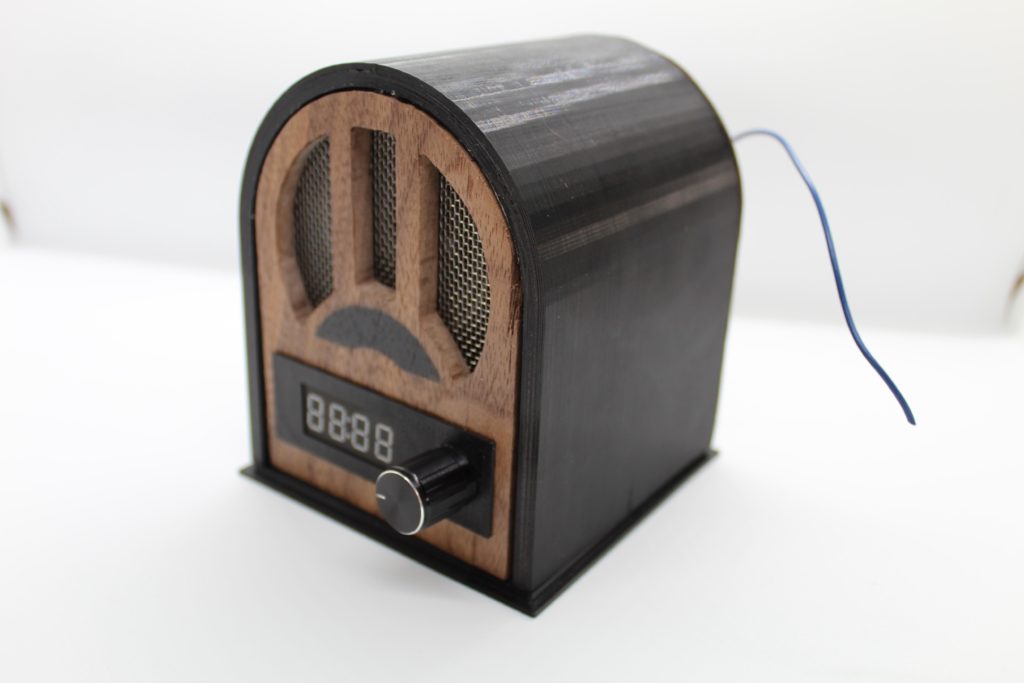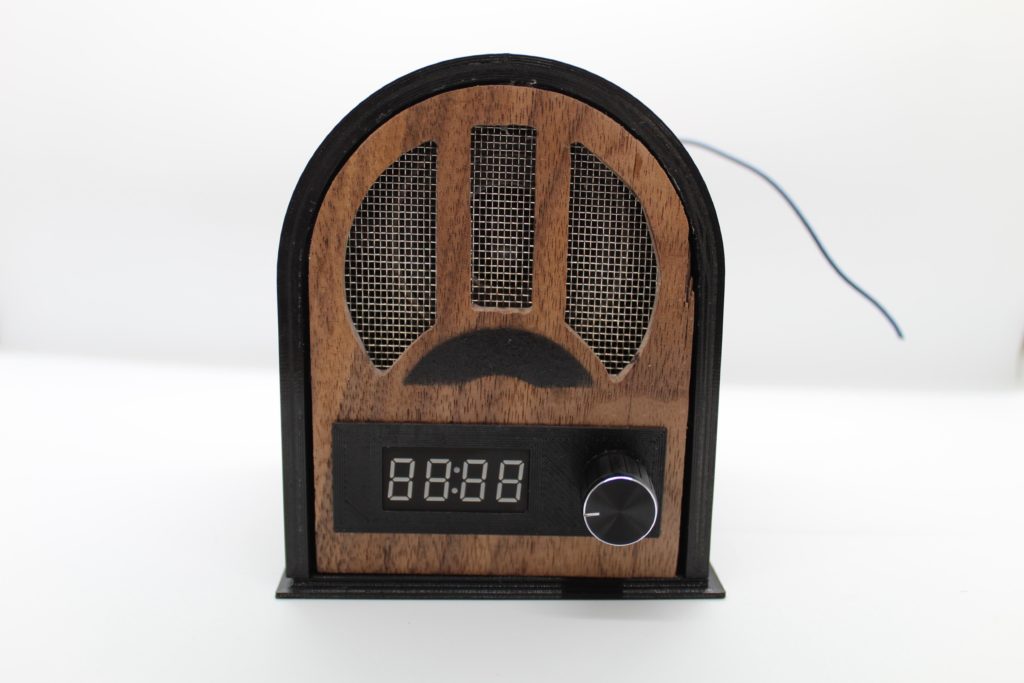20

As time has progressed, personal radios have shrunk from the size of a large filing cabinet down to a tiny circuit that can be integrated into other ICs. Instructables user exposedwire wanted to bring back the feeling of a vintage 1920s radio set, so they built one out of wood that carries the same antique feeling with some more modern features.
For the electronics, exposedwire went with an Arduino Uno for the main control board, along with a TEA5767 FM receiver IC that communicates with the Uno over I2C. The currently tuned frequency is displayed on a seven-segment LED module, which is driven by the ubiquitous TM1637 chip. The station can be changed by rotating the accompanying rotary encoder. Finally, the resulting audio signal is sent from the TEA1637 to an NS8002 amplifier and outputted from a small speaker.

The outer shell of the enclosure was fabricated by first 3D printing an arch-like structure and gluing it to the back wooden cover. After the speaker was set into its mount, the wooden faceplate was attached along with its speaker grill and front panel assembly. The FM radio antenna simply sticks out the back next to the power input jack.
To read more about this DIY radio project, you can view its writeup here on Instructables or see a build/demonstration video here on YouTube.
The post This Arduino radio looks like something from 100 years ago appeared first on Arduino Blog.


